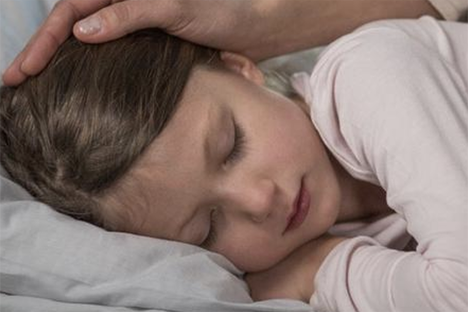
As a parent, you want to keep your child safe from harm. While safeguarding family is a top priority, most parents don’t realize that they are putting the health of their children at risk every day.
The invisible threat? Indoor air pollution, which can be up to five times more polluted than the air outdoors. You can’t always see or smell it, but it’s there. Then consider that children spend about 90% of their time indoors, and more than a third of that time playing and sleeping in their bedrooms.
Air pollution inside your home can trigger a wide range of health effects on kids—from childhood asthma and allergies to reduced learning abilities through to higher risks of childhood cancer and cardiovascular disease later in life. Using air purifiers for children’s bedrooms helps remove harmful indoor air pollutants that may otherwise end up in children’s airways.
Getting kids to bed early has more benefits than giving parents a few hours of time at night. Research shows how sleep recharges children—mentally and physically. Sleep promotes growth, helps the heart, helps maintain the right body weight, fights off infection, increases attention spans and promotes learning. What’s more, better sleep and good air quality for kids go hand in hand.
School-aged children need about 11 hours of sleep each night, pre-schoolers slightly more at 13 hours, and infants and toddlers about the same but with naps during the day. This means children spend a lot of time in their bedrooms where they encounter allergens and asthma triggers. These include dust mites, bacteria and viruses, and chemicals from indoors and particle pollution from outdoors, which enters through windows and ventilation systems.
Children sleep better with clean air, studies show. Air purifiers in children’s bedrooms have a positive impact on kids’ health and well-being, and parents around the world are beginning to understand the importance of clean air. More than two-thirds of parents in China, India, South Korea and the US think that air purifiers contribute to raising healthy children, according to a survey from the UK-based research firm YouGov.
Think the air quality in your child’s bedroom is safe? Think again. Kids come into contact every day with environmental pollution in their rooms. The everyday items you choose to make your child’s bedroom a fun, safe space to play in, learn in and sleep in are probably releasing toxic air pollutants into the room.
Besides dust, pollen and bacteria, a child’s room can contain up to 300 different chemicals, studies show. Essential items, like mattresses, paints, flooring, curtains, cleaning products and toys, can release chemicals into the air. Yet none of the items is in violation of any law. That’s why it’s important to be a savvy consumer to minimize your child’s exposure to chemicals. And why a simple measure like buying a kid-friendly air purifier and placing it in your child’s room can significantly reduce or eliminate pollutants that may irritate your child’s lungs. It may also provide children with faster-acting relief for allergy and asthma symptoms than many natural home remedies.
Clean air has been linked to children’s health and wellbeing. Children are especially sensitive to air pollution because their bodies and their lungs are still developing. They breathe in about 50% more air per pound or kilo of body weight than adults do. And because their air intake is higher and their bodies relatively smaller, they more readily absorb air pollutants which puts them at greater risk.
Indoor air pollution has far-reaching health effects on growing children. It stunts development of their lungs. It stunts development of their brains. No area of the brain is untouched by air pollution. Studies also show that it stunts their growth even before they are born.
Here’s an alarming fact. More than 90% of the world’s children under the age of 15 years breathe toxic air every day, says the World Health Organization. That’s 1.8 billion children or roughly 25% of the global population. The challenge of protecting children from indoor and outdoor air pollution is enormous.
Raising kids is hard. Making the right choices to keep them safe from harm should be easy. Some of the best air purifiers for kids’ rooms are Blueair Classic models. Blueair Classic removes gases and fine particles (PM2.5) including allergens and asthma triggers. For the best performance, choose the Classic model according to the size of your child’s room.
Parents will find the free Blueair Friend app reassuring. The app lets you use your smartphone to monitor the air quality in your child’s room at all times. Or connect the Classic to your Amazon Alexa and control the air purifier through Alexa.
Why Blueair? All Blueair air purifiers use HEPASilent™ technology, which combines the best of two filtration technologies to deliver the highest possible filtration efficiency. More air passes through the filter faster and more silently, using less electricity. This means that Blueair air purifiers work better than other air purifiers even at their lowest speed.
With a Blueair Classic, parents can rest easy, knowing their children can play well, sleep well, and be well where they spend most of their time, in their rooms. Using an air purifier for a child with allergies or asthma or even kids without allergies or asthma can provide you with some peace of mind.
Breathing clean air contributes to a healthier, happier life. And what parent doesn’t want that for their child?


